Our moths p. 1 and Our moths p. 2 (below)
Yellow-collared scape moth (Cisseps fulvicollis)
This pretty little moth shows that it’s not just butterflies that are worth looking for!
I found this one on a Canada burnet, but I’ve seen it elsewhere, too.
In our yard, it most likely lays eggs on grasses and sedges.
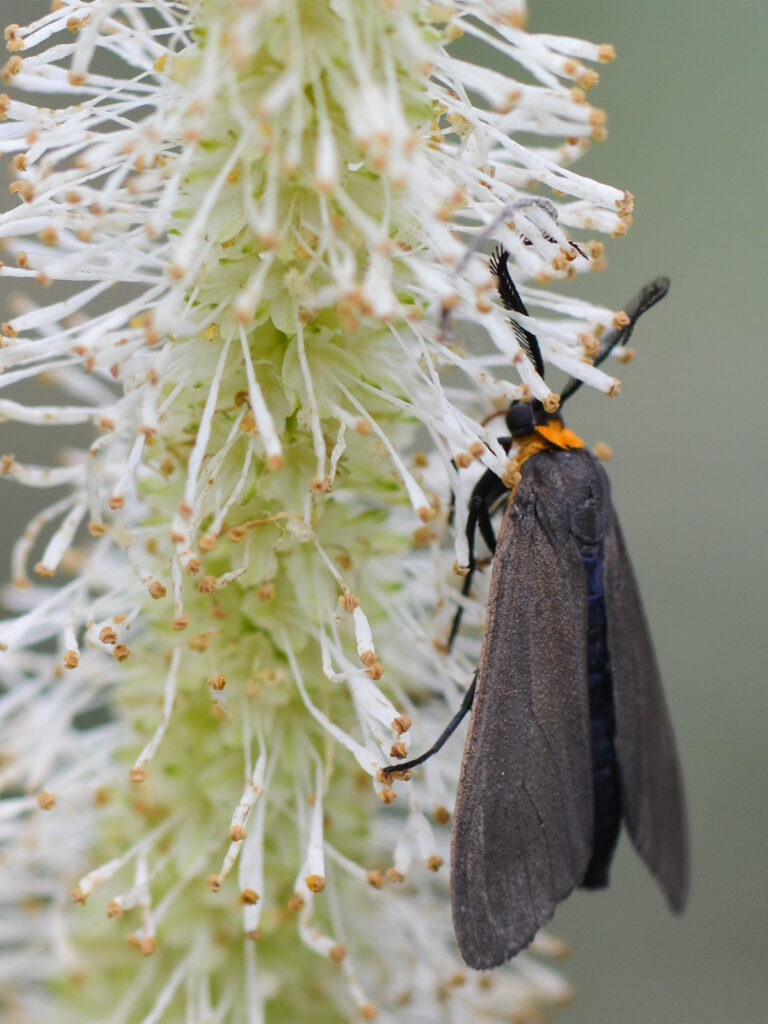
HOST PLANTS: Grasses and sedges, lichens, and spike-rushes
More yellow-collared scape moth info at Butterflies and Moths of North America
Lesser maple spanworm moth (Macaria pustularia)
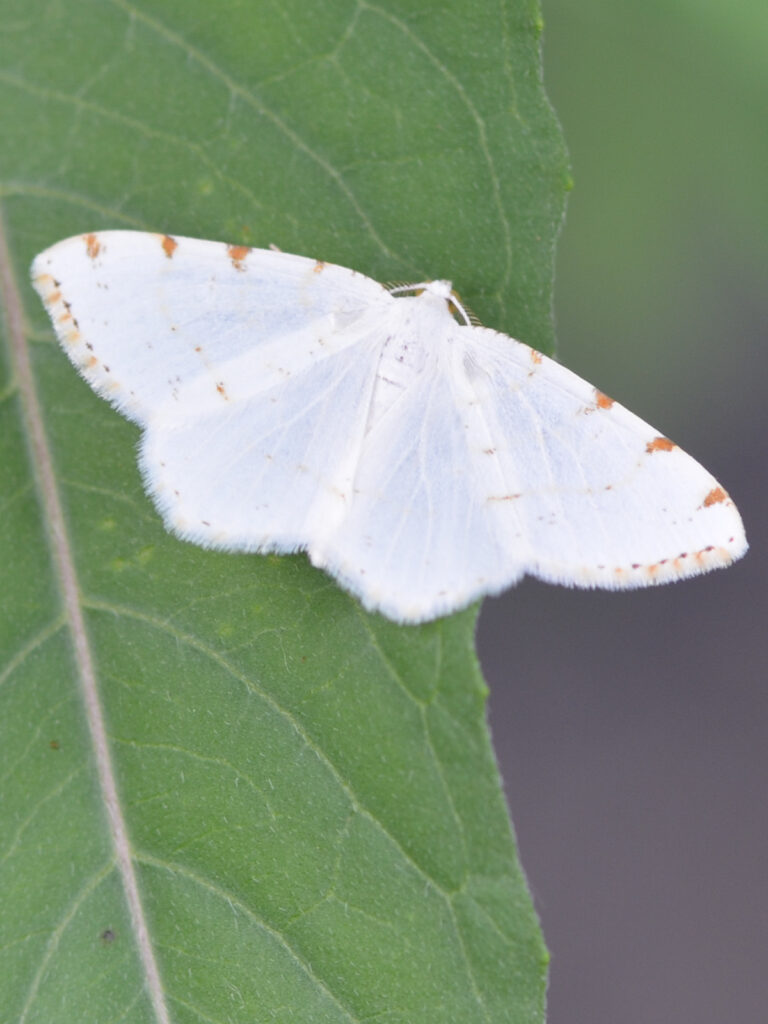
It’s easy to immediately dismiss any white butterfly as the despised cabbage white, but when I took a closer look, it was quite different .
Very dainty little moth.
It’s always gratifying to see that we grow at least two of its host plants!
HOST PLANTS: Maple (especially red maple (Acer rubrum), which we grow), and also recorded on birch, cherry, poplar, fir, hemlock, and tamarack.
More lesser maple span worm moth info at Butterflies and Moths of North America
Goldenrod borer plume moth (Hellinsia kellicottii)
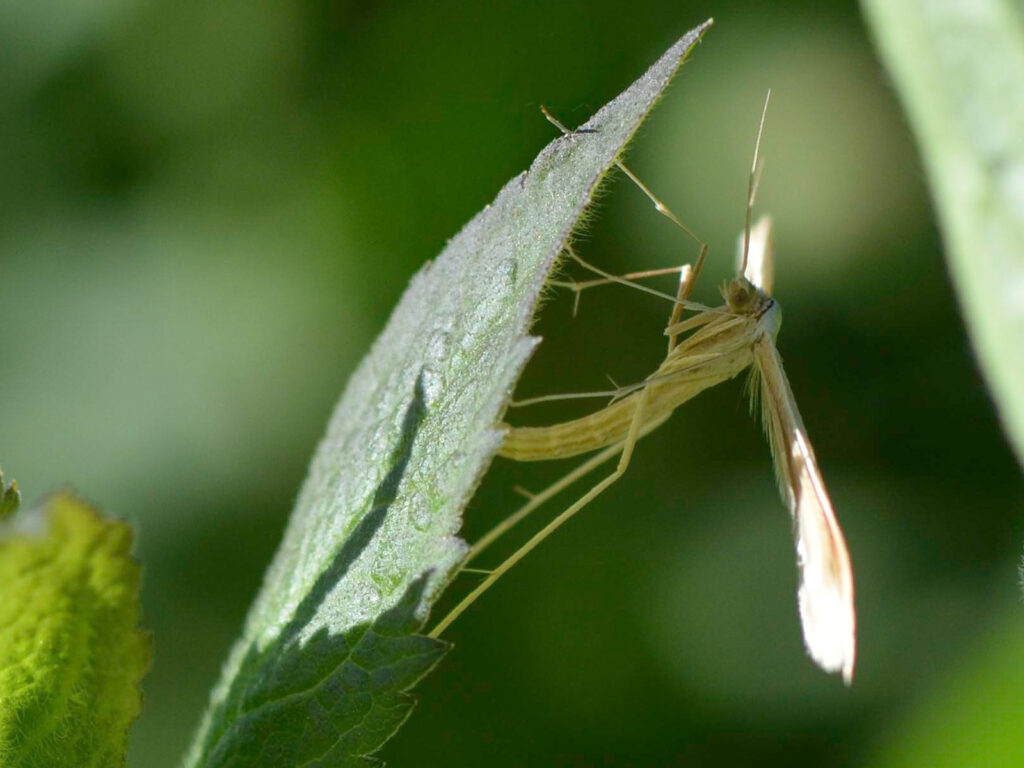
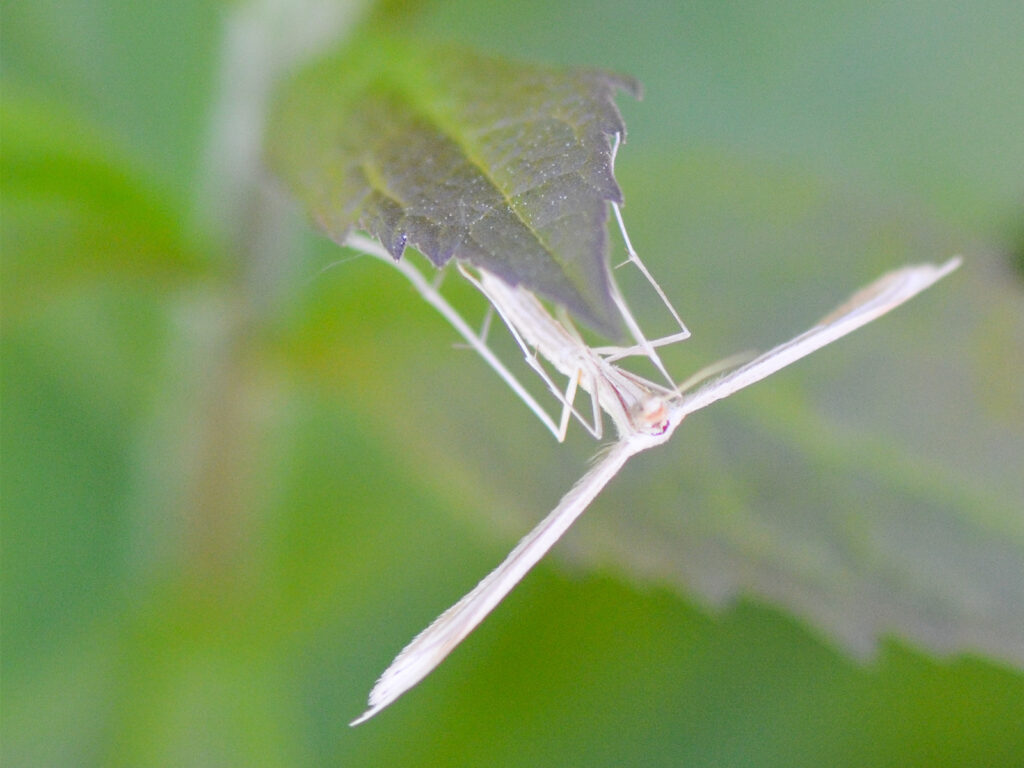
This looks like a glider plane!
According to Wikipedia, “Young larvae bore into the stem. Before reaching the third instar, the larvae leave the upper part of the plant stem through a lateral hole and move down to the mature, wider stem. Here it makes another hole and bores down toward the roots.”
HOST PLANTS: Goldenrod (Solidago)
(I haven’t yet found much more info on this moth)
Confused haploa (Haploa confusa)
I don’t know why this is called the confused haploa, but it’s a cute little moth.
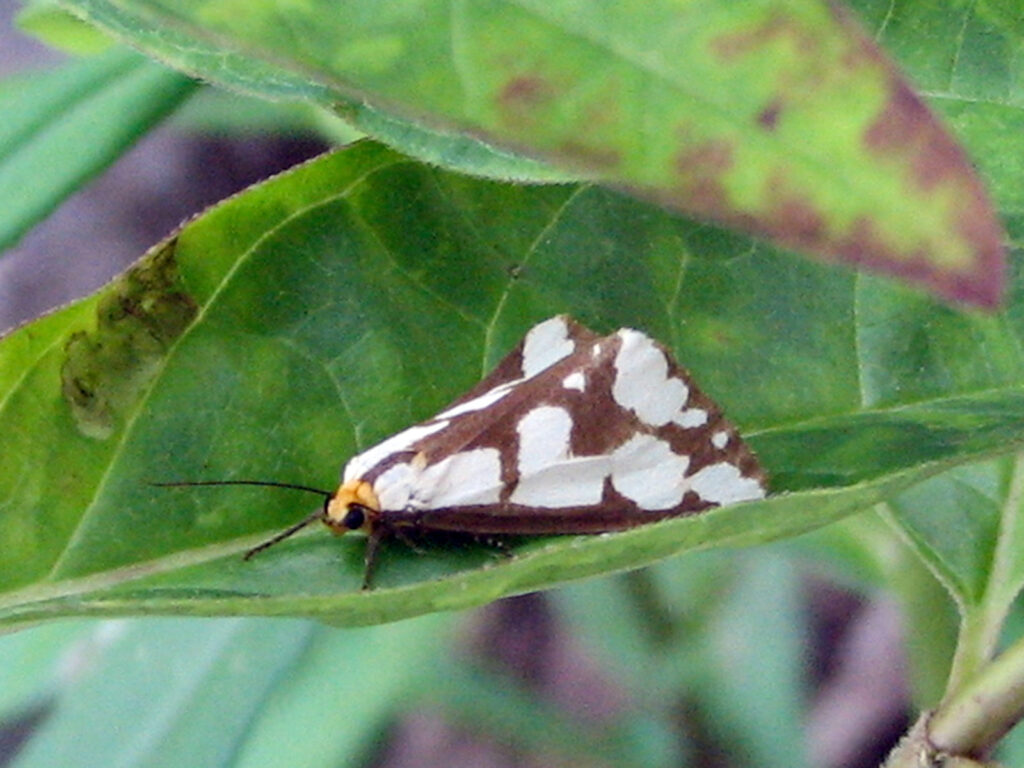
HOST PLANTS: A wide variety of plants, including Eupatorium and willow
More confused haploa info at Butterflies and Moths of North America
Tebenna (Tebenna onustana)
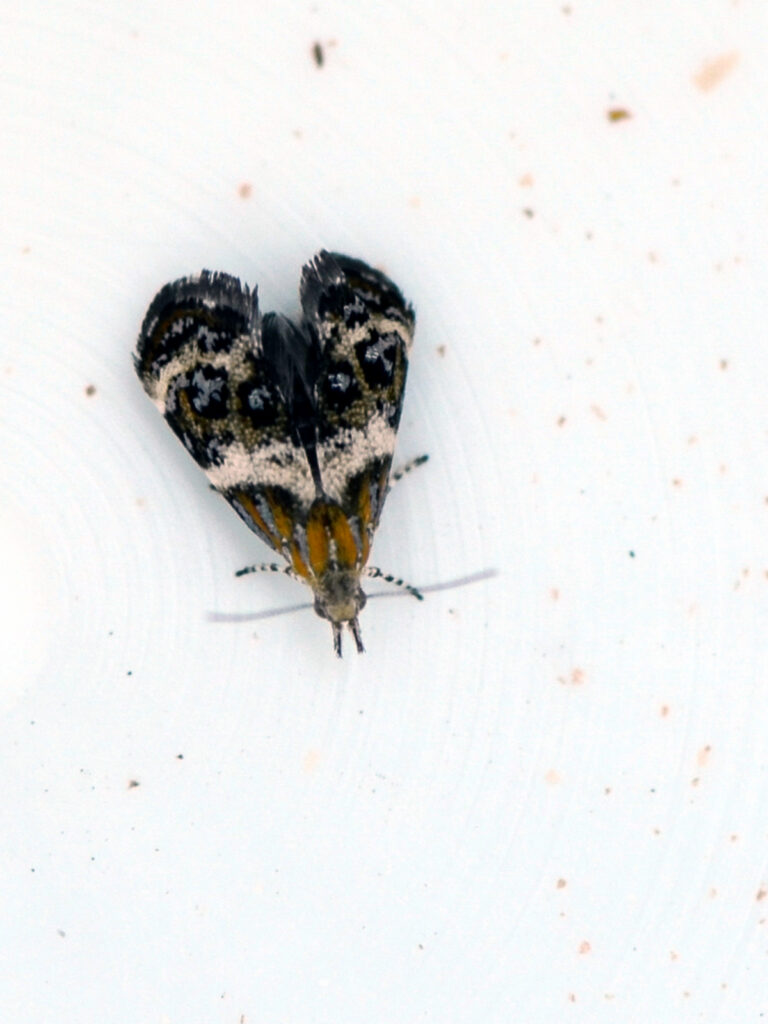
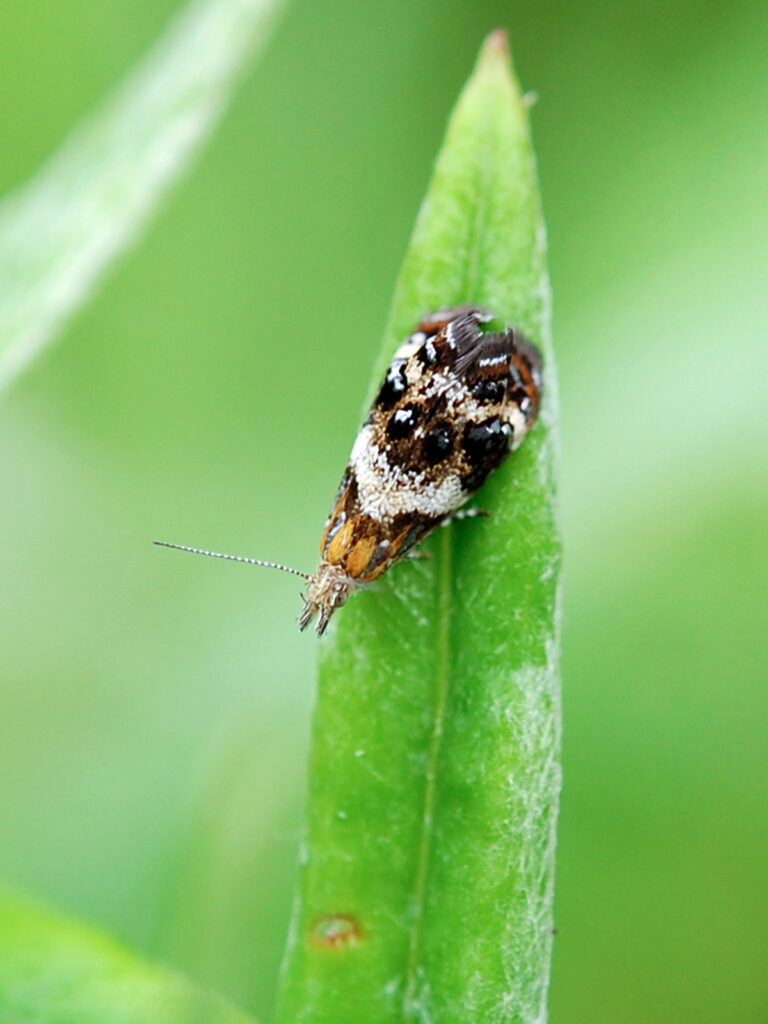
Thanks to BugGuide.net, I now know that this is a tebenna moth. It’s an intriguing little insect.
On a sunny day, hundreds of these teeny-tiny things (just about 3 mm) flit about only on the pearly everlasting (Anaphalis margaritacea) and pussytoes (Antennaria) plants and nowhere else (that I have noticed anyway).
This tiny moth is a fine example of the beauty found in tiny things. Before I took this photo and enlarged it, I hadn’t seen all the intricate jewel-like details. We can miss so much when we just walk quickly by our garden plants!
An aside: This small moth goes so unnoticed that it doesn’t even have a common name!
HOST PLANTS: (As far as I know) Pearly everlasting (Anaphalis margaritacea) and pussytoes (Antennaria) depending on the particular species
More (though not much) tebenna info at Butterflies and Moths of North America
Polyphemus silk moth (Antheraea polyphemus)
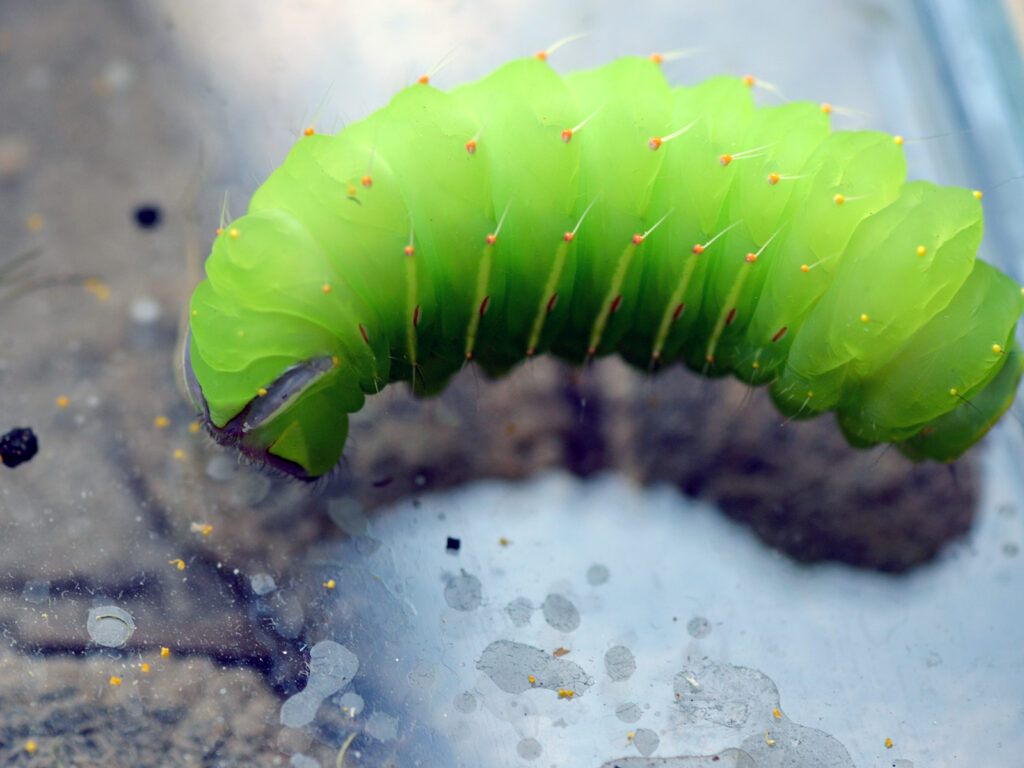
What a spectacular caterpillar! Brilliant color and very large. My neighbor found this one in her yard and gave it to me to raise.
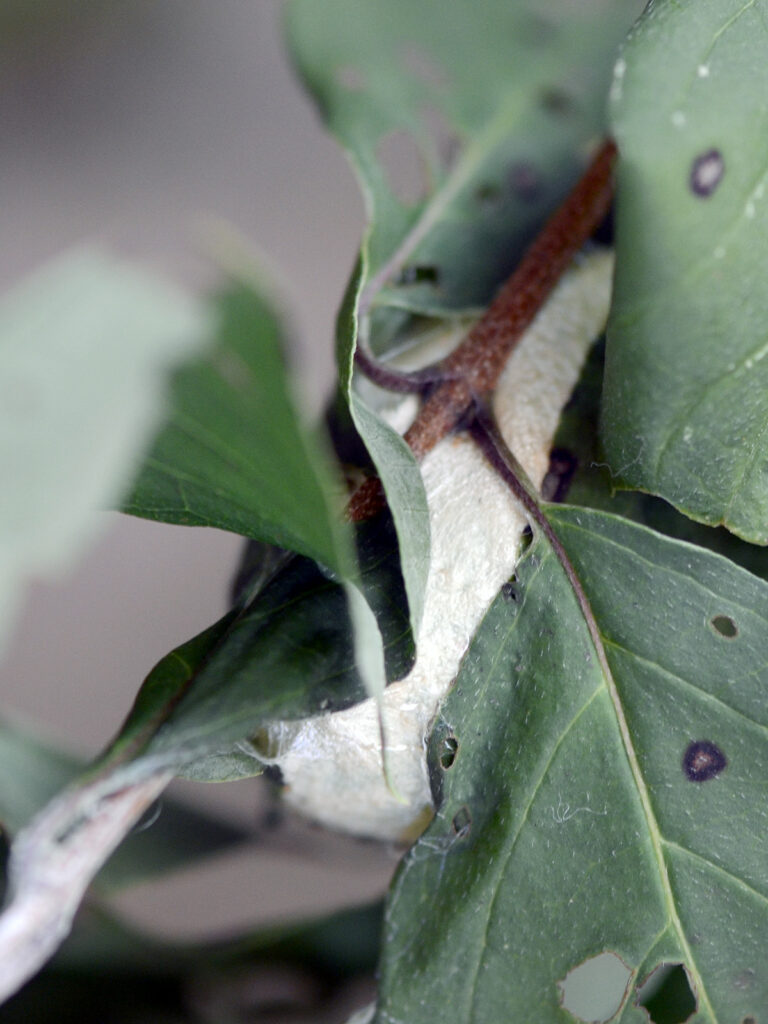
Unlike butterflies, it does indeed create a cocoon for itself!
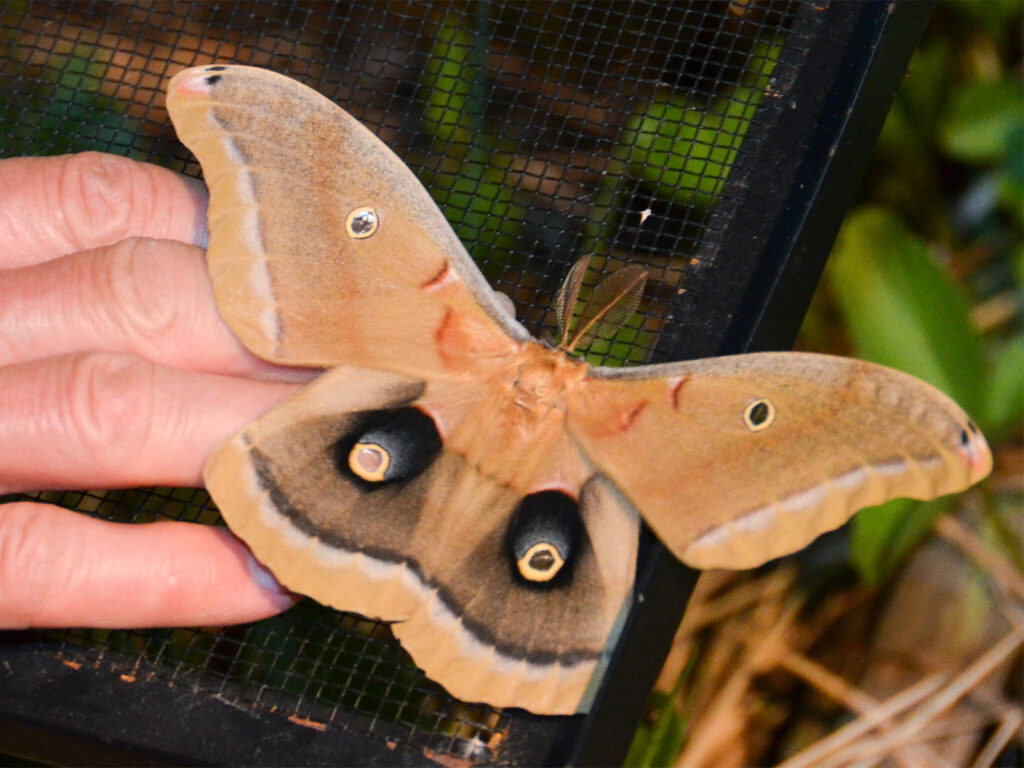
This moth is BIG!
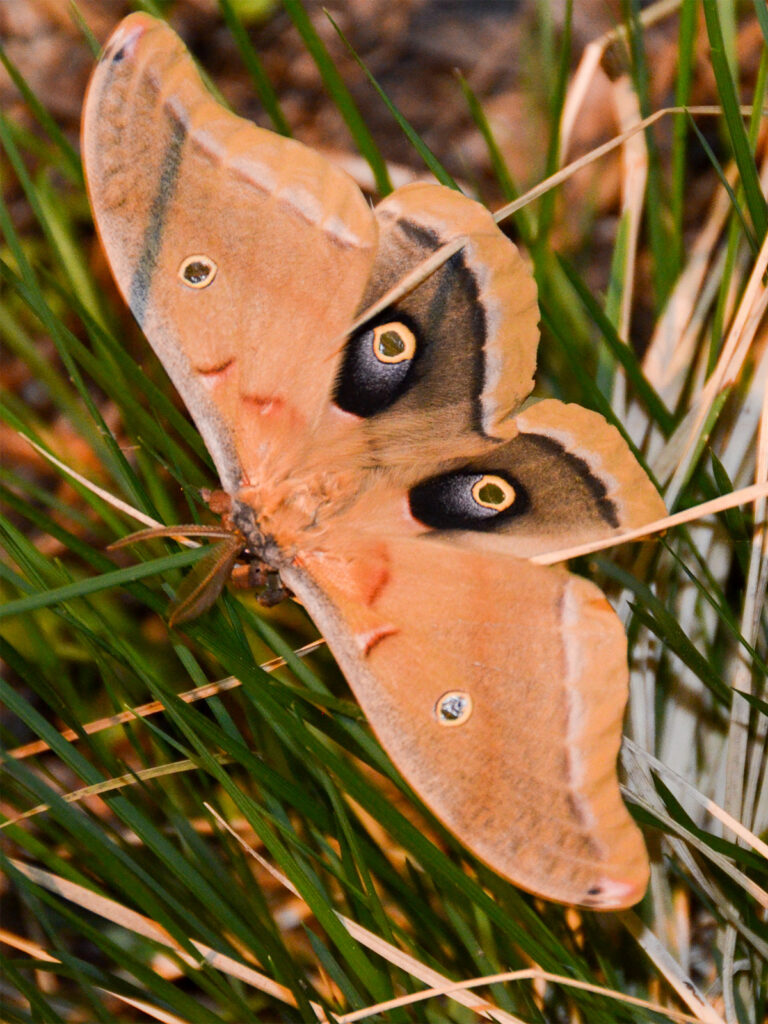
HOST PLANTS: birch, willow, oak, maple, hickory, beech, walnut etc.
More polyphemus moth info at Butterflies and Moths of North America
(Its caterpillar is easy to confuse with the Luna Moth caterpillar.)
Common looper moth (Autographa precationis)
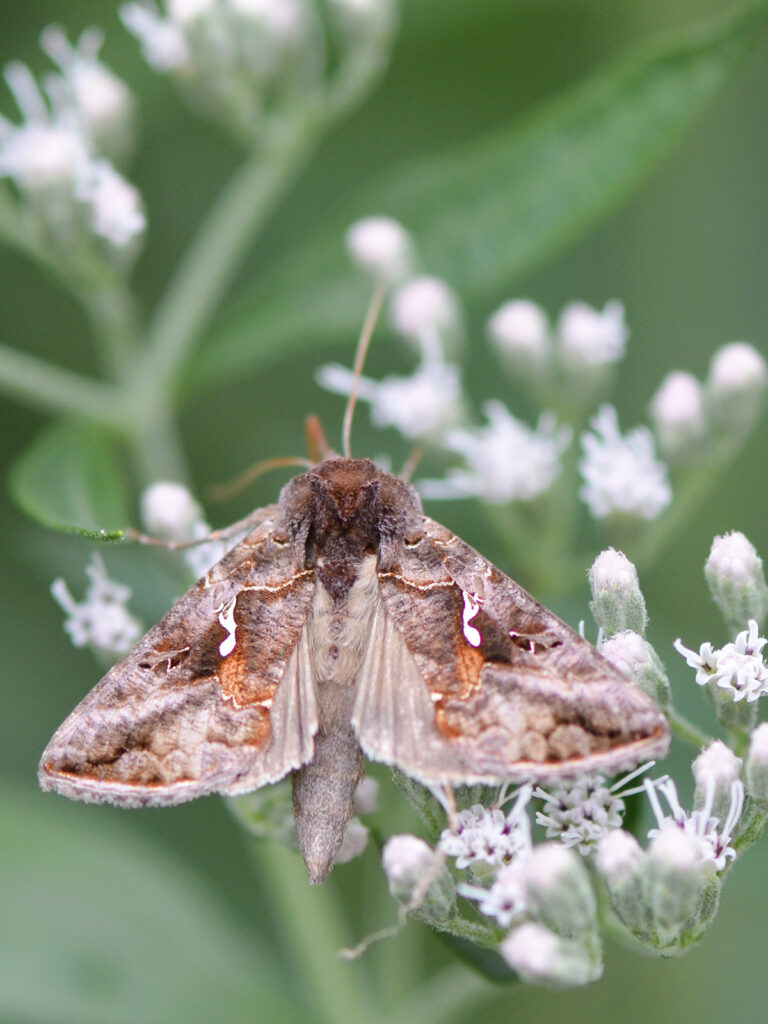
HOST PLANTS: Not a lot of info on this, but appears to be bean, cabbage, dandelion, false foxglove, parsnip, sunflower, thistle, and wild lettuce
Armyworm moth (Mythimna unipuncta)
This flew out of our ground cherry patch as I was harvesting. When BugGuide ID’d it, I discovered it’s considered an agricultural pest. Could this be the source of the little worms infesting some of our harvested ground cherries?
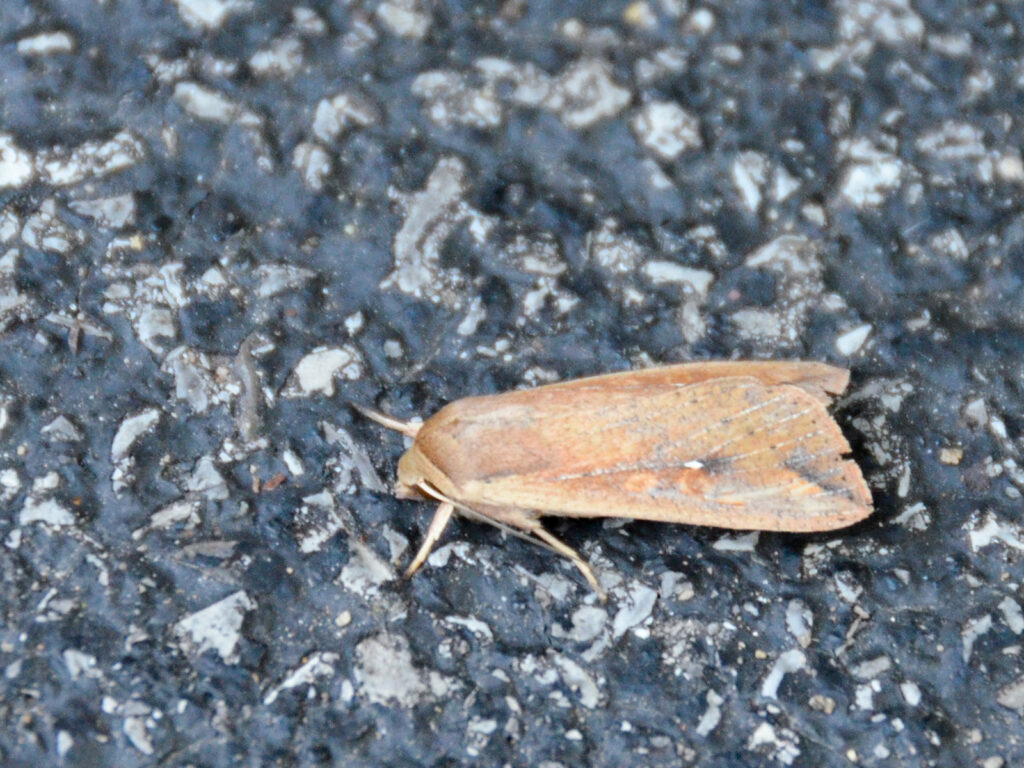
CATERPILLAR SIGHTINGS ONLY
So far, I haven’t seen the adult moth (that I know of anyway), but these caterpillars have a beauty of their own.
Isabella tiger moth (Pyrrharctic isabella)
This moth is better-known in its caterpillar form: the familiar wooly bear. Traditionally, it was said to predict winter weather by the size of its stripe, but that didn’t stand up to scientific scrutiny. Supposedly the size of its stripes indicates the abundance of food in the growing season. Its other claim to fame does hold up, though: it’s often seen crossing the road looking for a log or rock to overwinter under.
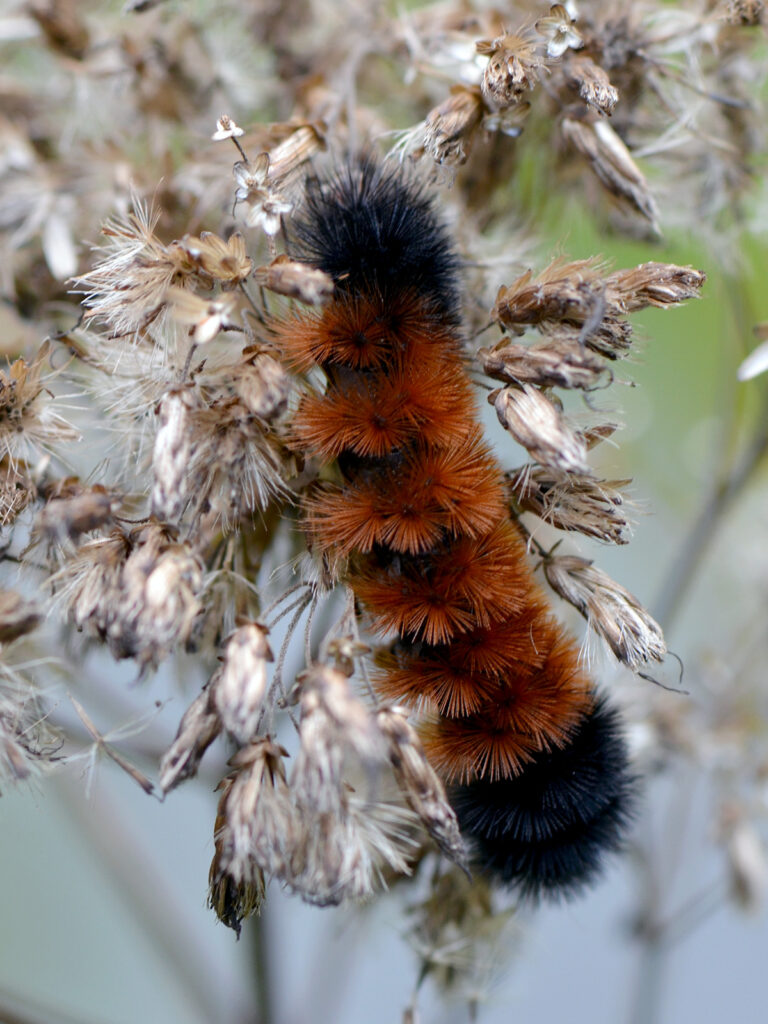
The wooly bear caterpillar becomes an Isabella tiger moth. They must be around since there are so many wooly bears, but I haven’t noticed it either because it’s only nocturnal or it just isn’t noticeable.
HOST PLANTS: A variety of plants including birch, maples, asters, sunflowers, spinach, grass, plantain
More isabella tiger info at Butterflies and Moths of North America
White-marked tussock moth (Orgyia leucostigma)
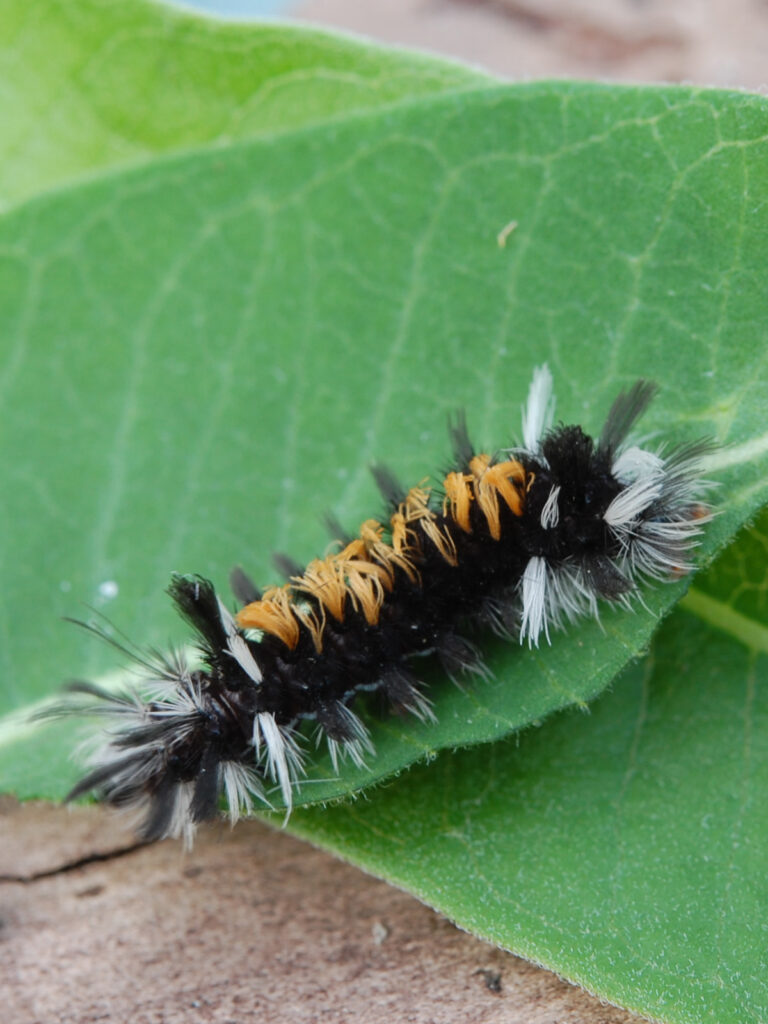
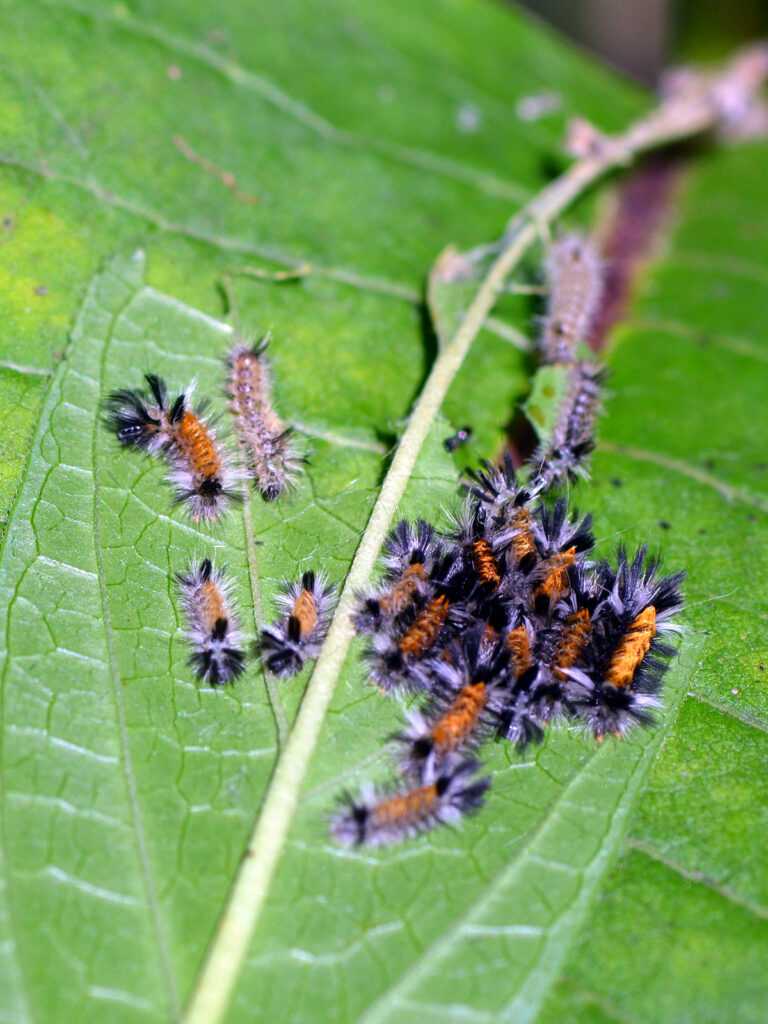
This is a white-marked tussock moth caterpillar. It’s certainly elaborately decorated, unlike the adult moth form, which is fairly nondescript.
I found this one eating lettuce leaves (though in this photo it was eating milkweed leaves). I don’t know if they’re a big problem. They don’t seem to be a problem in our garden.
HOST PLANTS: Alder, apple, balsam fir, birches, larch etc.
More white-marked tussock info at Butterflies and Moths of North America
Giant leopard moth (Hypercompe scribonia)
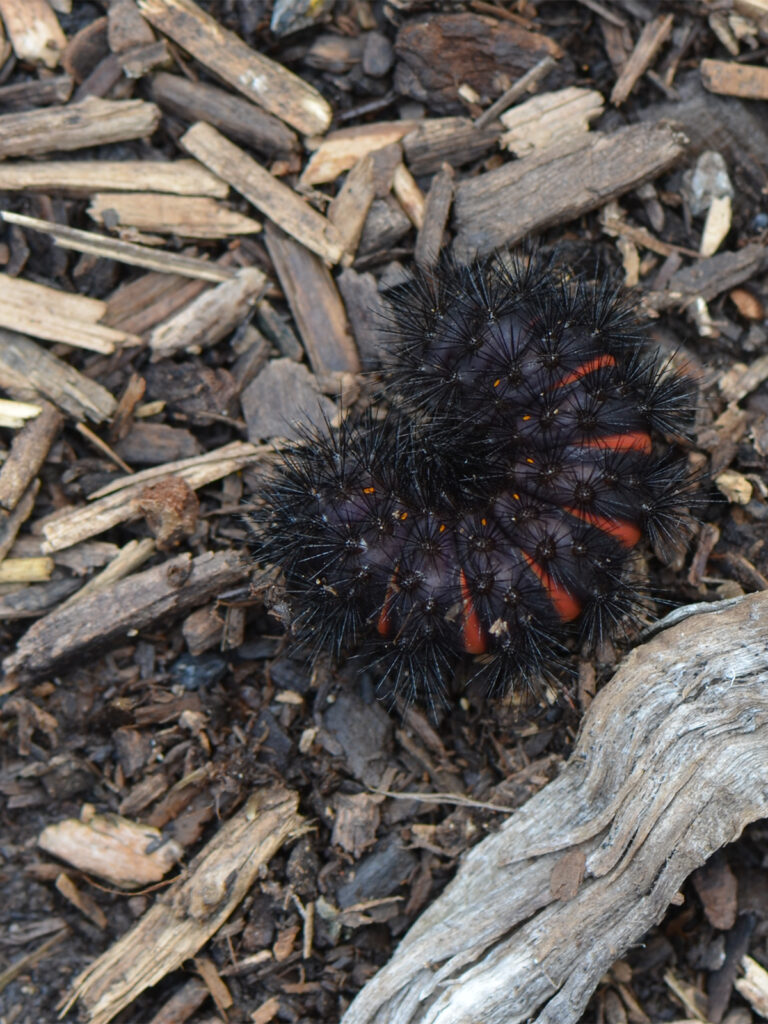
This is the caterpillar, which I think is rather striking, but I haven’t seen the adult moth.
Here the caterpillar is in its defensive posture since I had disturbed it by placing it in our mulch path for its portrait. I found it originally in our front yard leaf litter.
These are some of the creatures that people rake up when they neaten their yards. What a loss!
HOST PLANTS: Wide variety, including cabbage, cherry, dandelion, maples, sunflowers, violets, and willows.
More giant leopard moth info at Butterflies and Moths of North America
Curved-tooth geometer (Eutrapela clemataria)
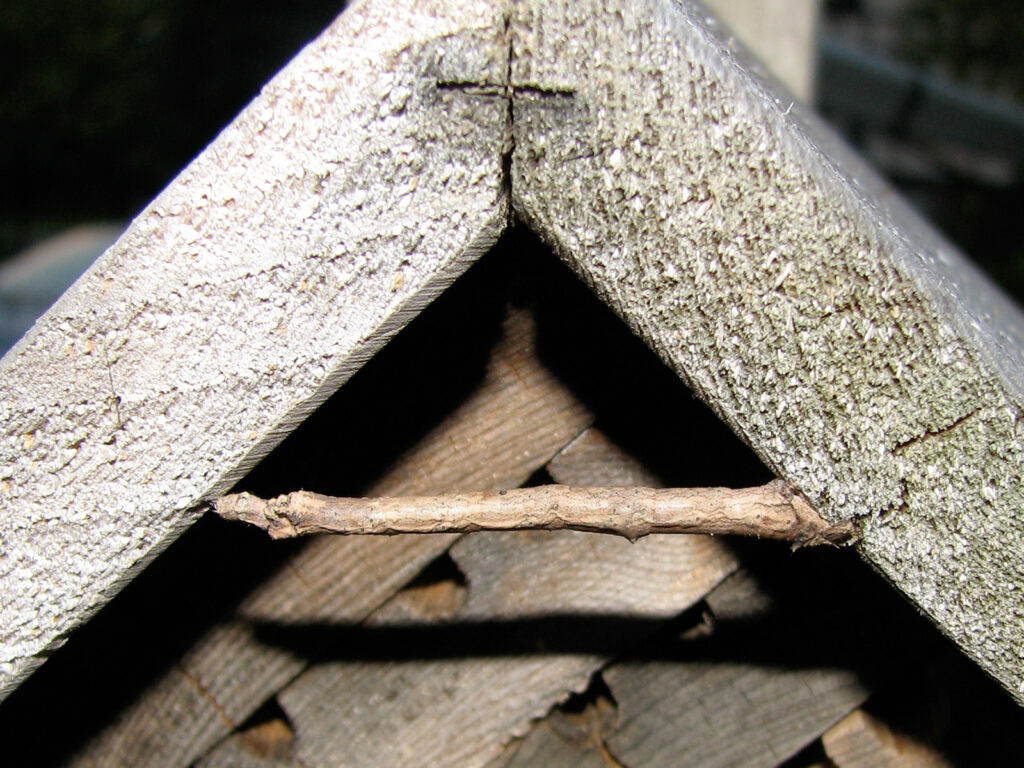
When I first saw this moth caterpillar on our bee house, I wondered how a stick became attached to the front of the house. But when I looked a little later, I saw that it had lengthened until it spanned the whole front of the bee house (about 2 inches). It was alive! It turns out that it’s a caterpillar in the Geometridae family. When viewed up close it looks remarkably like a stick. Incredible camouflage! (I don’t have a photo of the adult moth.)
HOST PLANTS: Birches, maples, etc.
Goldenrod hooded owlet (Cucullia asteroides)
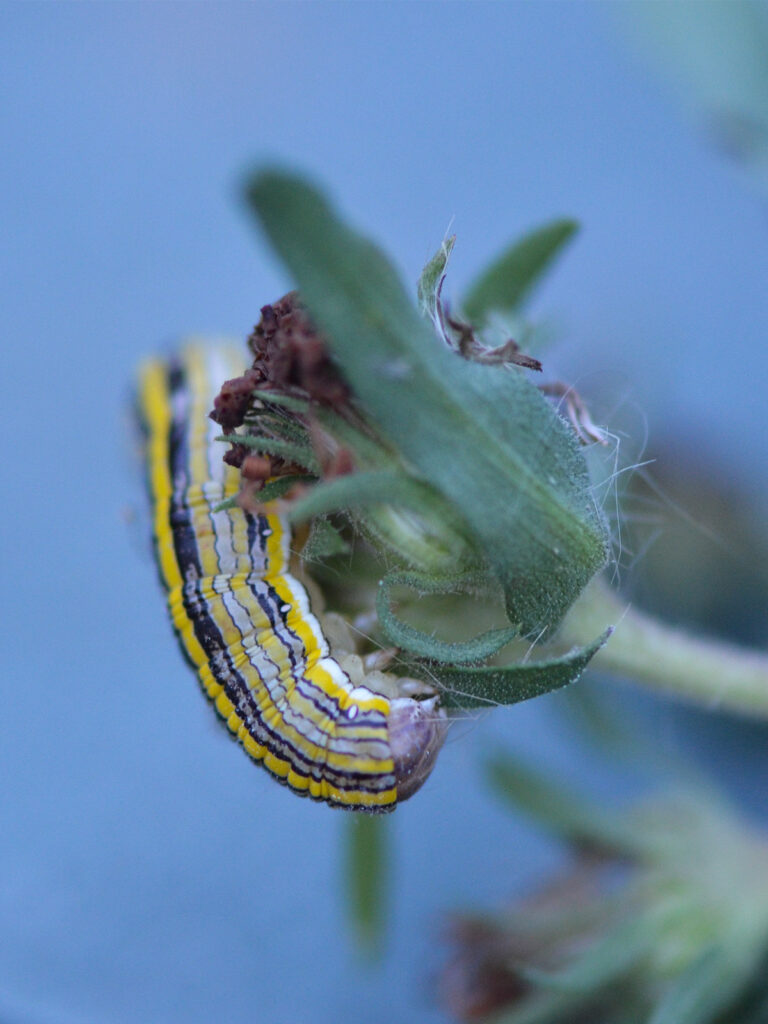
A very striking caterpillar, but I haven’t seen the adult moth.
HOST PLANTS: Flowers of asters, goldenrods, and other composites
More goldenrod hooded owlet info at Butterflies and Moths of North America
Patalene (Patalene)
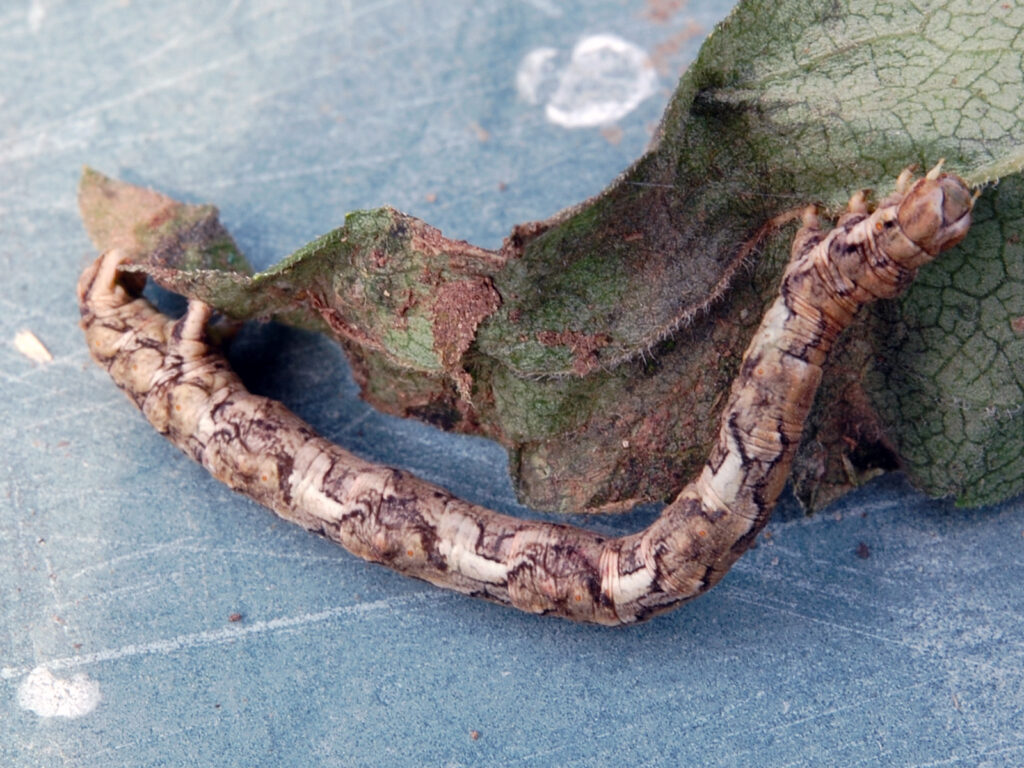
This is the caterpillar of the Patalene moth. It walks as a inchworm would walk, which is why it’s in the Geometridae family, which roughly means “measuring the earth.”
Pearly wood-nymph (Eudryas unio)
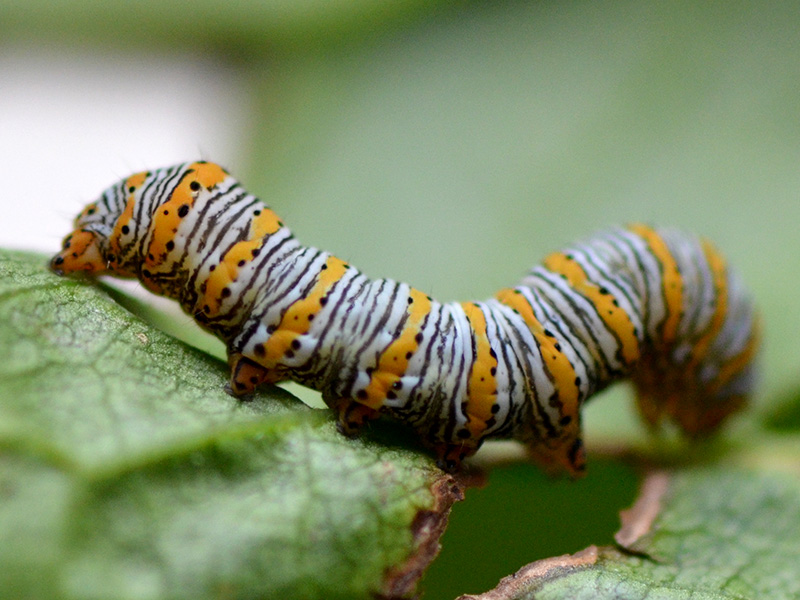
We found this on a big-leaf aster at our 2022 HGCNY plant sale. We decided to remove it and try to raise it ourselves. Fortunately, one of its host plants, biennial primrose is one we have in abundance so he had plenty to eat.
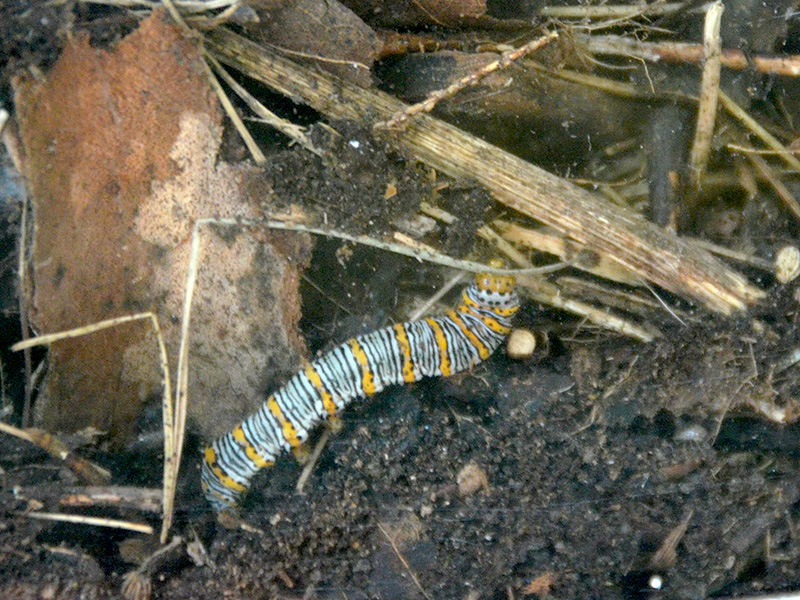
Then he searched for a place to pupate in our aquarium. I put some dirt and leaf litter etc. in the bottom since I didn’t think he was going to be pupating above ground as monarchs or swallowtails do.
He kept searching, so I put some sticks in just in case he wanted them.
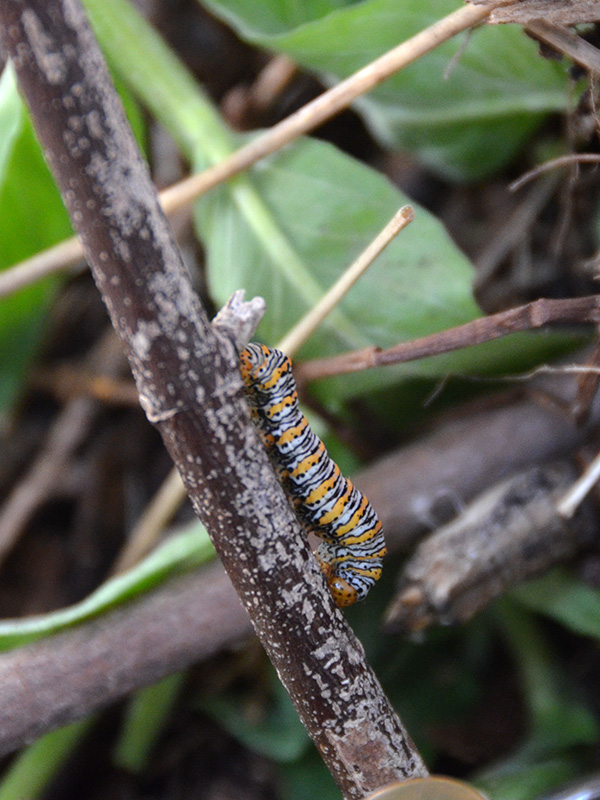
I was surprised to see him so involved with this stick, and he seemed to be discarding something from his mouth rather than creating a silk pad to attach to.
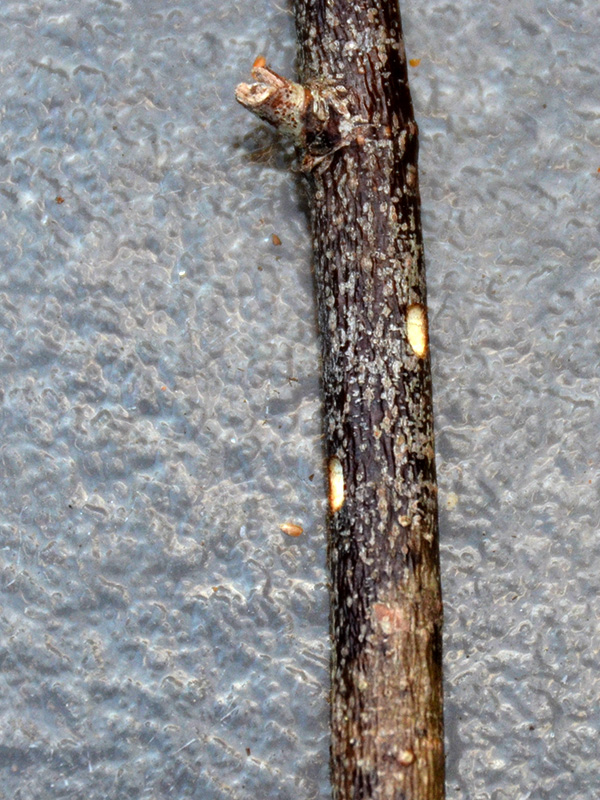
I was surprised to see that this little caterpillar was actually creating holes in this pretty solid stick!
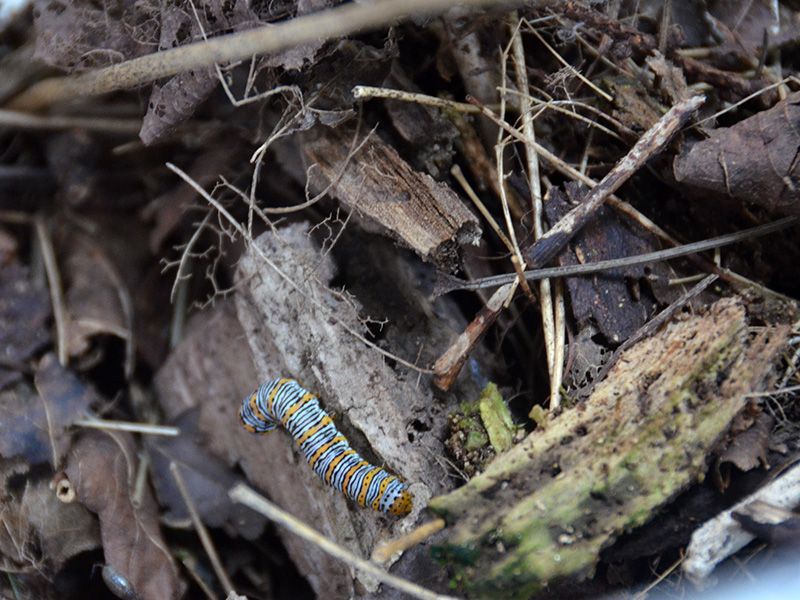
I found some information that indicated that it might pupate in soft wood. So that’s why he was chewing!
I added some soft pieces of wood to the aquarium and that’s the last I saw of him.
I hope he found a good spot in one of those pieces and that we’ll see a beautiful moth in the spring!
